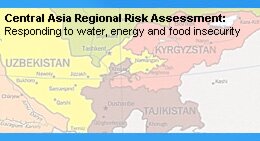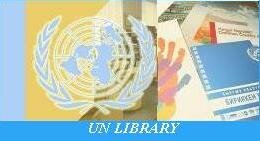|
INFORMATION LEAFLET #1
ON THE INFLUENZA A (H1N1) VIRUS
1 May 2009
CAN I TRAVEL?
At present, there are no specific travel restrictions recommended by WHO, nor by the UN Medical Services. Staff are, however, advised to exercise prudence when considering travel to affected areas, and to consult with their Medical Service on ways to reduce potential risks associated with travel.
Staff who are ill should delay international travel. Returning travelers who are well can return to work, but should monitor themselves for at least 7 days for flu-like symptoms, such as fever, sore throat, cough, blocked nose, chills, headaches, body aches, fatigue, and possibly diarrhea and vomiting. Staff who become ill with flu-like symptoms following travel should remain home, and seek medical attention immediately.
HOW CAN I PROTECT MYSELF FROM THE INFLUENZA A (H1N1) VIRUS?
Protective measures to avoid getting or spreading the influenza A (H1N1) virus are the same as for seasonal flu, and most other respiratory infections. They include:
• Washing your hands often with soap and water, especially after you cough or sneeze. Alcohol based hand cleaners are also effective.
• Encouraging all people to cover their mouth and nose when they cough or sneeze.
• Trying to avoid close contact with sick people.
• If you become ill, limiting contact with others to avoid infecting them.
WHAT SHOULD I DO IF SOMEONE I LIVE OR WORK WITH IS SICK WITH FLU-LIKE SYMPTOMS?
If the symptoms are severe, the sick person should see a medical provider. If you had close contact with a laboratory confirmed case, your healthcare provider may suggest testing for the influenza A (H1N1) virus infection. Please note that the UN Medical Service does not have laboratory capacity to test for the virus. Staff visiting the UN Medical Services’ Clinic, who have had close contact with a laboratory confirmed case of influenza A (H1N1), will be referred to a local health care provider.
SHOULD I BE WEARING A SURGICAL MASK?
There is no clear scientific evidence that surgical masks are effective in controlling influenza A (H1N1) virus transmission in the community setting. Staff who have close contact (defined as less than 6 feet distance) with persons who might be ill, can consider using surgical masks if they wish to, and should actively limit the time spent in that setting.
WHAT ARE THE SYMPTOMS OF INFLUENZA A (H1N1) VIRUS INFECTION?
The symptoms appear to be similar to the symptoms of regular human flu, and include fever, cough, sore throat, body aches, lethargy, headache, chills and fatigue. Some people have reported diarrhea and vomiting associated with this virus.
WHAT SHOULD I DO IF I HAVE FLU-LIKE SYMPTOMS?
Anyone experiencing flu-like symptoms such as fever, cough or sore throat should stay home for work or school for at least 7 days, and not return until two days after the symptoms end. Wash your hands frequently. And always cover your mouth and nose when you cough or sneeze. You do not need to go to the hospital for mild illness, but anyone with severe symptoms such as difficulty with breathing, should seek health care and treatment immediately.
IF I AM ILL, DO I NEED TAMIFLU?
The antiviral medication, Tamiflu (oseltamivir) can help alleviate flu symptoms, and are particularly important for people with severe illness or with risk factors for complications from flu. Groups that are normally at higher risk of complications include young children, the elderly, and people with chronic illness. Flu patients who belong to those risk groups should seek treatment when ill.
Pandemic flu booklet may be downloaded from the below Download link.
|








